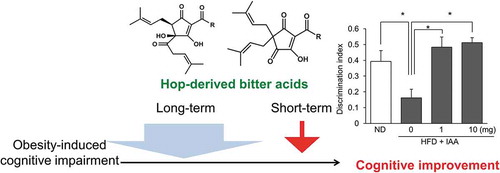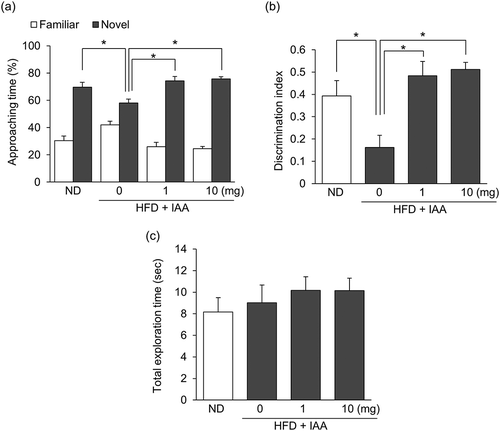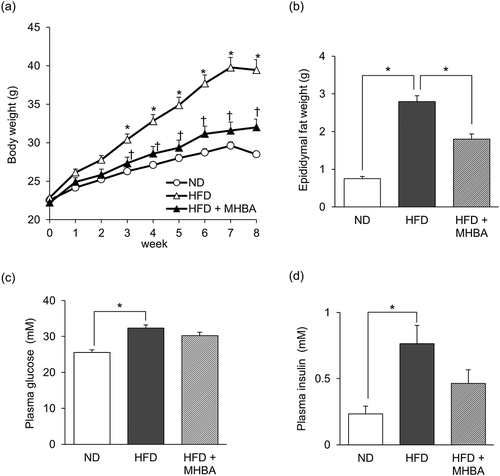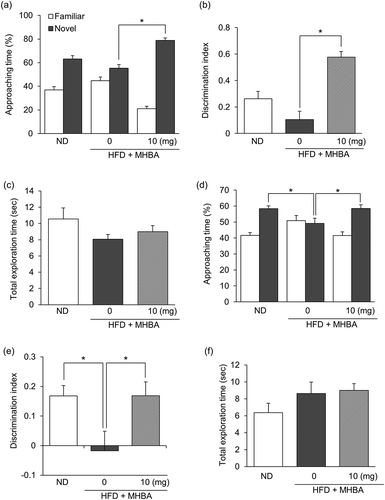Figures & data

Table 1. High-fat diet and normal diet formulations.
Figure 1. Short-term IAAs administration improves object recognition memory in HFD-fed obese mice. (a) The time spent exploring a novel or familiar object over 5 min in the NORT was measured. (b) The discrimination index (DI; (time spent investigating novel object minus time spent investigating familiar object)/(total exploration time)) was calculated. (c) The total time spent exploring both objects was calculated. All values are expressed as means ± SEM (n = 8–10 mice per group). *P < 0.05 versus each group.

Figure 2. Long-term dietary MHBAs intake prevents HFD-induced excessive body weight and adipose tissue gain. Male C57BL/6J mice were either fed a normal diet, a high-fat diet (HFD), or HFD with 0.05% (w/w) MHBAs supplementation for 8 weeks. (a) Body weight was measured every week. (b-d) Epididymal fat weight (b), plasma glucose level (c), and plasma insulin level (d) at the eighth week of feeding, when mice were sacrificed. All values are expressed as means ± SEM (n = 10 mice per group). (a) *P < 0.05 versus ND-fed group, †P < 0.05 versus HFD-fed group. (b-d) *P < 0.05 versus each group.

Figure 3. Long-term dietary intake of MHBAs improves obesity-induced object recognition memory impairment. (a) Time spent exploring a novel or a familiar object over 5 min in the NORT was measured. (b) The discrimination index (DI; (time spent investigating novel object – time spent investigating familiar object)/(total exploration time)) was calculated. (c) The total time spent exploring both objects was calculated. All values are expressed as means ± SEM (n = 8–10 mice per group). *P < 0.05 versus each group. (d,e) The discrimination index was negatively correlated with body weight (r = −0.601, p = 0.0002) and epididymal fat weight (r = −0.546, p = 0.0021).

Figure 4. Short-term administration of MHBAs improves object recognition and spatial reference memory in HFD-fed mice. (a) The time spent exploring a novel or a familiar object over 5 min in the NORT was measured. (b) The discrimination index (DI; (time spent investigating novel object minus time spent investigating familiar object)/(total exploration time)) in the NORT was calculated. (c) The total time spent exploring both objects was calculated. (d) The time spent exploring a novel or a familiar location over 8 min in the novel location recognition test was measured. (e) The discrimination index in the novel location recognition test was calculated. (f) The total time spent exploring both locations was calculated. Either MHBAs (10 mg/kg) or distilled water were orally administered 60 min prior to both the acquisition and recall periods in each test. All values are expressed as means ± SEM (n = 8–10 mice per group). *P < 0.05 versus each group.

